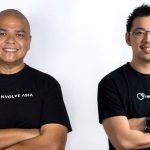
“Over-the-top”(OTT) streaming content platforms to usher in cross-platform media measurement opportunities.
How brands communicate with people will continue to evolve rapidly away from paid media. Brands will embrace new storytelling opportunities, look to entertain in innovative ways. Experiments with voice-activated marketing, will emerge but this will also raise new measurement challenges.
This summation and many other trends in the new machine-learning technology-aided future market, figure in the Kantar Millward Brown Media and Digital Predictions for 2018.
The report points out what industry is ready for: that 2018 is poised to be another busy year for marketers, complete with continued evolutions in communication approaches, media targeting technology and ROI measurement.
Following a year where many brands were questioning and rethinking digital investment, 2018 will see more focus on an integrated view of the overall mix, including digital.
At the same time, measurement and optimisation approaches will be modified so that ROI becomes more of a journey and less of a destination.
Some of the key insights from the study are given below:
1. Advertisers will start with the story
Content will offer a new approach to storytelling. Marketers will stop approaching the world from a perspective of ad executions or campaigns.
This content will be digitally led, sparking a multitude of creative assets.
For Millennials and Gen Z, the digital ecosystem is becoming an environment where cohesive brand stories are being told. In 2018, advertisers will start with the story and from there have great content to fit to the format.
2. Branded entertainment takes centre-stage.
More brands will start to use film to communicate their messages in an entertaining way, distributed through a proliferating array of channels.
As audiences become more ad averse, marketers are finding new ways to communicate their brand messages. Kantar Millward Brown’s AdReaction: Engaging Gen X, Y and Z study shows that cinema and TV are among the most positively-received media channels for all audiences, especially for Gen Z (16-19 year olds).
The Lego Movie was the first mainstream successful example of long-form branded entertainment. It has resulted in spin-off films and The Lego Movie Sequel, planned for 2019.
With the rise of platforms like Netflix, Apple TV, Facebook TV and broadcaster VOD, options for distribution continue to expand.
3. Voice Spurs Adoption of New Devices
To date, few households have invested in a connected device. But the advent of voice control may lead to widespread consumer adoption, provided manufacturers can bridge the divide between devices.
For years we have heard about the huge potential market for connected devices in the home. Enter Amazon with its Echo device and Alexa smart assistant.
Voice control may just prove to be the panacea that smart device manufacturers have been looking for. A recent survey conducted by Kantar Millward Brown found that just over 1 in 5 people online in the US claim to have a voice-enabled system like Echo, Google’s Home or Apple’s HomePod.
4. Accelerated growth of walled gardens
In 2018 walled gardens will grow their share of advertising dollars even faster, but marketers need to push them to build more doors and windows within those walls for their campaigns.
In 2017 walled gardens have received a lot of pressure from advertisers and media agencies to guarantee the quality of their delivery. Despite this, the two key players (Google and Facebook) will post strong growth in advertising dollars in 2017 and Amazon has posted 58% growth in the 3rd quarter of 2017 for its advertising business.
5. Marketing will evolve from algorithms to AI
The last decade of digital marketing has been ruled by the companies with the most compelling algorithms. It is now turning the corner on the development of machine learning technology such that software is now making smart outcome-based decisions.
It used to be that being the best at understanding how an ad auction algorithm worked accrued value for marketers leveraging that technology. While that’ll certainly continue to be true in 2018, industry will get its first glimpse of functional artificial intelligence being applied to marketing challenges in new and interesting ways.
6. Measurement follows media over the top
Scale and new data capture streams will usher TV and cross-platform video measurement into the OTT era.
Predictions of fragmentation and cord-cutting that were waiting in the wings just a few years ago now seem well-worn standards on the modern media stage. As anticipated, consumers are gravitating to digital platforms that offer a great user experience.
The stage has been set: stats abound of increased global Smart/Connected TV penetration, Netflix/SVOD subscriber growth, time spent viewing streaming/OTT premium content, proliferation of connected devices, and so on.
New actors, such as Automated Content Recognition embedded in devices, TVs, smartphone apps and voice assistants/IoT devices are on the scene.
7. Cross Media –the $100 million dilemma
In 2017, most advertisers started to reconsider their digital investment and scrutinise its impact. In 2018 they will go one step further and start to question the role digital plays within the entire media ecosystem.
Media agencies, publisher and research partners will have to be ready to give an answer.
Digital is no longer a channel, it is the layer that connects all marketing activities and should therefore not be treated as a silo.
Cookies, the universal way of tracking consumers’ online behaviours, will disappear over the next few years. Media investment in mobile – currently 50% of digital spend – will increase exponentially.
Said, Pablo Gomez, Media & Digital Director, Kantar Millward Brown, “Our latest `Getting Media Right’ report shows that 77% of marketers would increase their investment if they could better measure cross-channel ROI. It’s up to industry players to answer the $100 million dilemma: how could that money be invested better?
8. Media ROI will be about the journey
Stephen DiMarco, President, Media & Digital, Kantar Millward Brown, said, “If your definition of media ROI – especially digital ROI – is simply a measurable increase in sales tied to an ad impression, you’re short-changing yourself and your media partners. Media ROI is a continuous journey, not simply a check-the-box destination.”
“We live in competitive markets, so there is a tremendous amount of pressure on brand marketers – and their agency and media partners – to demonstrate that their media investments are moving the needle,” he added.
In 2018, real media ROI will become a fast-paced iterative journey which combines creative (content, not just ads) more closely with media (partnerships, not just insertion orders and exchanges).
Details of the Kantar Millward Brown study can be found here: Media and Digital Prediction 2018 Guide

The Malaysian Media Conference 2018 is INTERACTIVE
The Malaysian Media Conference is about Conversations.
Conversations before, during and after the Conference.
The best way to learn is when someone answers what you want to know.
With 15 speakers and moderators, the event will cover everything that is important for Media, Marketing and Digital moving forward.
Date: 8 February, 2018
Time: 8.30am – 6.00pm
Venue: The Grand Ballroom, Sime Darby Convention Centre, Bukit Kiara, Kuala Lumpur.
PDF: http://marketingmagazine.com.my/pdf/MMC2018-Prog.pdf
www.marketingmagazine.com/mmc2018

MARKETING Magazine is not responsible for the content of external sites.
An afternoon of conversations we never had, with leaders most of you never met.
Discover what’s possible from those who made it possible. Plus a preview of The HAM Agency Rankings REPORT 2024.
Limited seats: [email protected]
BOOK SEATS NOW









